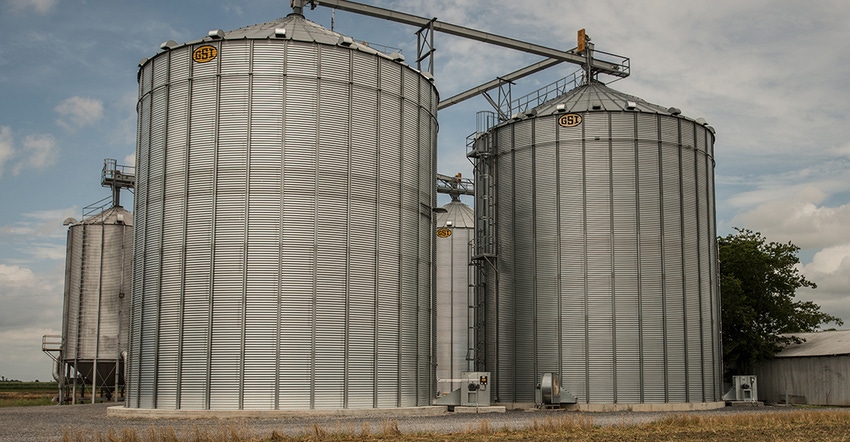
OK, your grain bin is empty, and you’ve cleaned it out the best you can. Now what? Are there more steps to take if you’re interested in preventing any contamination of the new crop with mold or insects left behind by the old crop?
Gary Woodruff, GSI conditioning applications manager, answers these and other questions about cleaning grain bins that might arise as harvest approaches.
Does a farmer need to pull up the grain bin floor for cleaning? Yes, at some point they probably will [need to pull up grain bin floors]. In any bin that gets cycled — meaning loaded and unloaded — repeatedly, you will see more fines and debris under the floor. Rodents, insects and mold treat this as their private food pantry, and it can harbor everything you don’t want to pass on to the next year’s crop.
Can you do anything to make cleaning under floors easier in some bins? In a drying bin, particularly one with a multiple-auger floor sweep system, you will see more debris passing through the floor. You can have cleaning doors installed opposite the fans in the grain plenum. Opening these doors and running the fan or fans periodically with grain in the bin causes a high velocity that will remove most of that debris. If these doors aren’t in place or [aren’t] used, eventually the plenum will have more debris than the rodents can eat. It will fill up, interfering with air movement and even heat delivery.
There are special floors available which open up somewhat easier that make this job quicker. That may be something to look into. The plenum doors and regular cleaning is the best and least labor-intensive answer.
Is fumigation needed on a routine basis? For most farm nonfood-grade grain storage, fumigation is not used regularly. It’s reserved for grain taken into the second year of storage, or it’s reserved for serious cases of insect infestation. If it’s not a process you use regularly and have been trained with a procedure in place, consider hiring a professional pest control operator. Special equipment and training is required to properly administer a fumigant. For longer-term storage of food-grade corn such as popcorn, fumigation is common, and a procedure and process plan should be written and adhered to.
What else should you know about fumigation? This process is dangerous, and you should be very sure you can do it properly before attempting it. With most of the available fumigants, it will involve the complete sealing of the bin from bottom to top, determining and administering the dosage to the bin surface, waiting a specific period of time, and then evacuating the fumigant from the bin. This must be done properly, or serious injury may occur.
Check your local university’s website for fumigants allowed in your area, along with other information for safe and effective usage [of these materials].
Editor’s note: This is the second story in a series on preparing for the 2017 harvest.
About the Author(s)
You May Also Like




